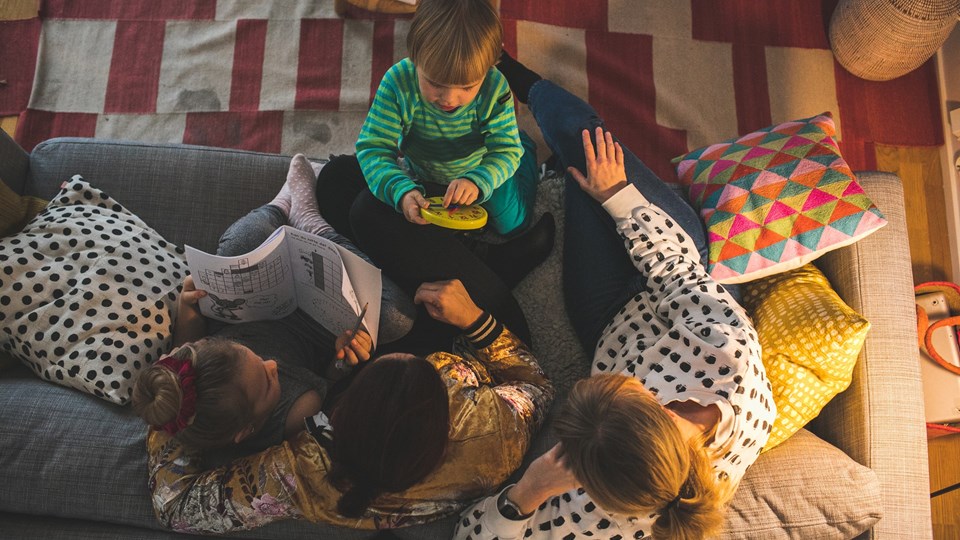At home
Smart choices at home are good both for the environment and for your health. Think carefully before buying furniture and lighting to create a healthier environment for yourself, your loved ones, and for the environment.
Sustainable furnishing
- Buy sustainable furniture of good quality that will last for a long time
- Fix, re-paint or re-cover your worn-down furniture.
- Sell or give away furniture you’ve grown tired of to flea markets or internet services.
- Buy furniture second hand, but avoid furniture and pillows with foam rubber from the 70's, 80's, and 90's. Manufacturing in those years used flame retardants which are now prohibited.
- Do not buy textiles, couch covers, or rugs treated with water- or dirt repellants, Highly fluorinated substances, or flame retardants. Ask the store what the textiles contain. If they can’t answer, ask them to pose the question to the supplier.
Reflect on lighting and heating
- Use LED lights. They have a much longer life span than regular lights, use much less energy, and are, therefore, less expensive in the long run.
- Put the thermostat at 20 degrees Celsius. If you can lower the temperature by one degree, you lower the energy use by about five percent.
- If a mercury lamp breaks, collect with a stiff paper and then wipe the surfaces with a damp cloth. Add everything to a container that you can seal shut.
- Label the container with "mercury" and submit to the environmental station as hazardous waste.
Make a fire the right way
- Ensure that there is proper combustion in the fireplace, or wood burning stove, by using dry wood and a continuous supply of oxygen. This decreases the formation of damaging particles.
- Never burn waste or impregnated wood.
- Do not light candles often, and never for long periods. Lit candles generate harmful particles.
Check your electronics
Electronics, cables, and cords can discharge damaging Flame retardants and Phthalates.
- Invest in an energy an efficient TV. The bigger the screen, the bigger the energy consumption.
- Turn off electronics that are not in use, and air out the space every day.
- Turn off the computer and its peripheral devices with the off-switch instead of putting it on stand-by.
- Get a power strip with an on/off switch. Electronic equipment with transformers such as 12 W halogen lights, wireless telephones, cell phone chargers, battery chargers, and set-top boxes use electricity even when not in use.
- Use green electricity produced from renewable energy sources such as wind power, hydro power, biofuels, and solar energy, marked with an independent eco-labeling.

